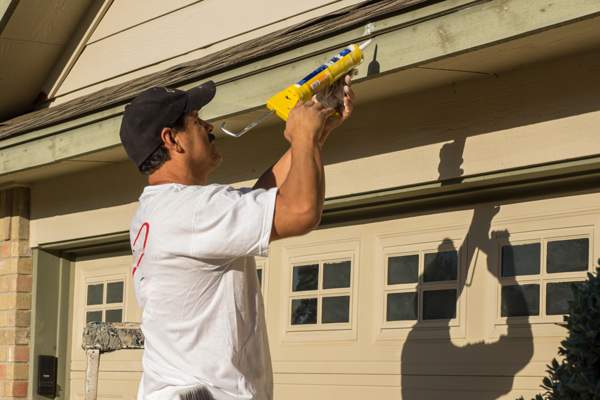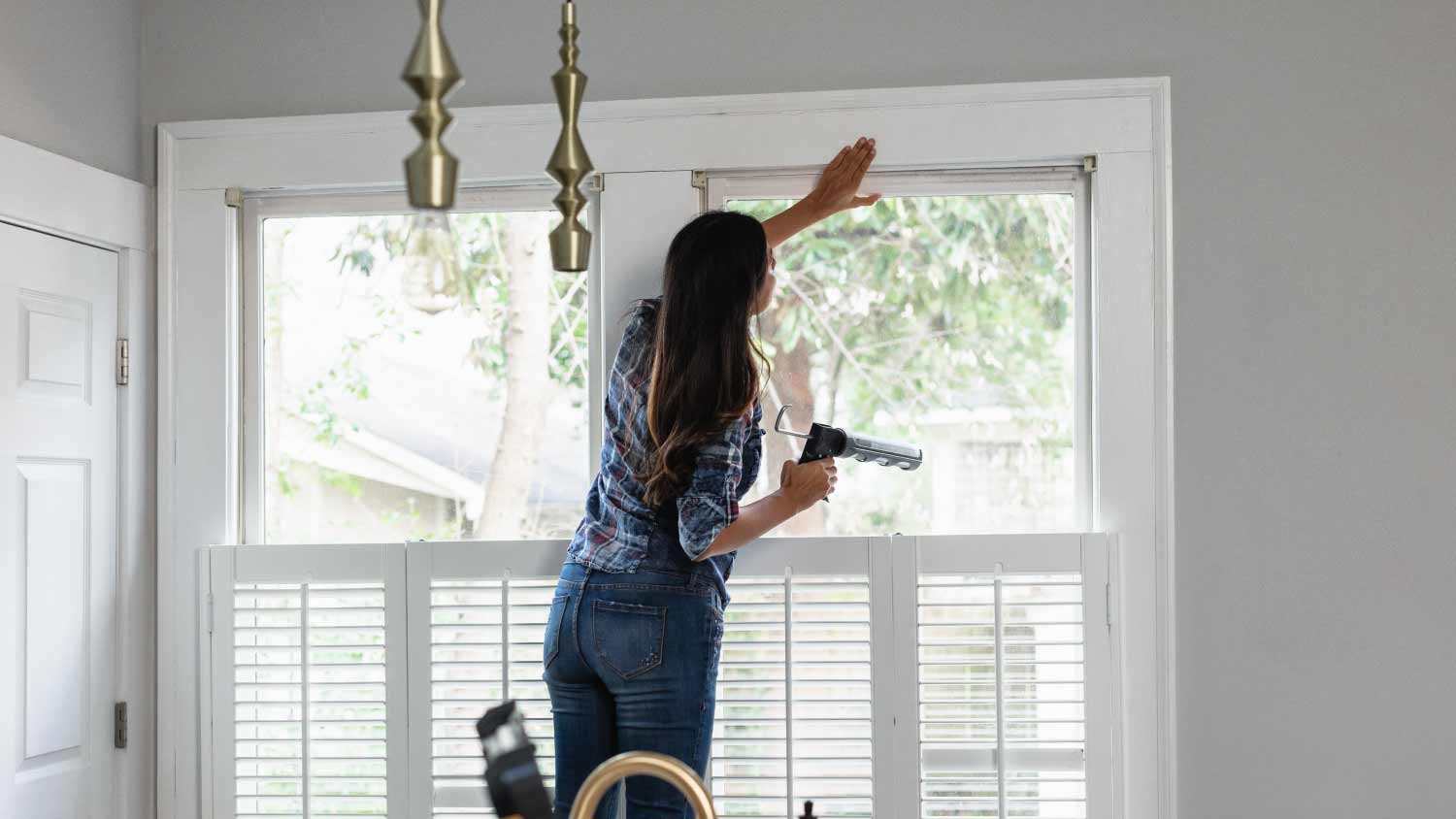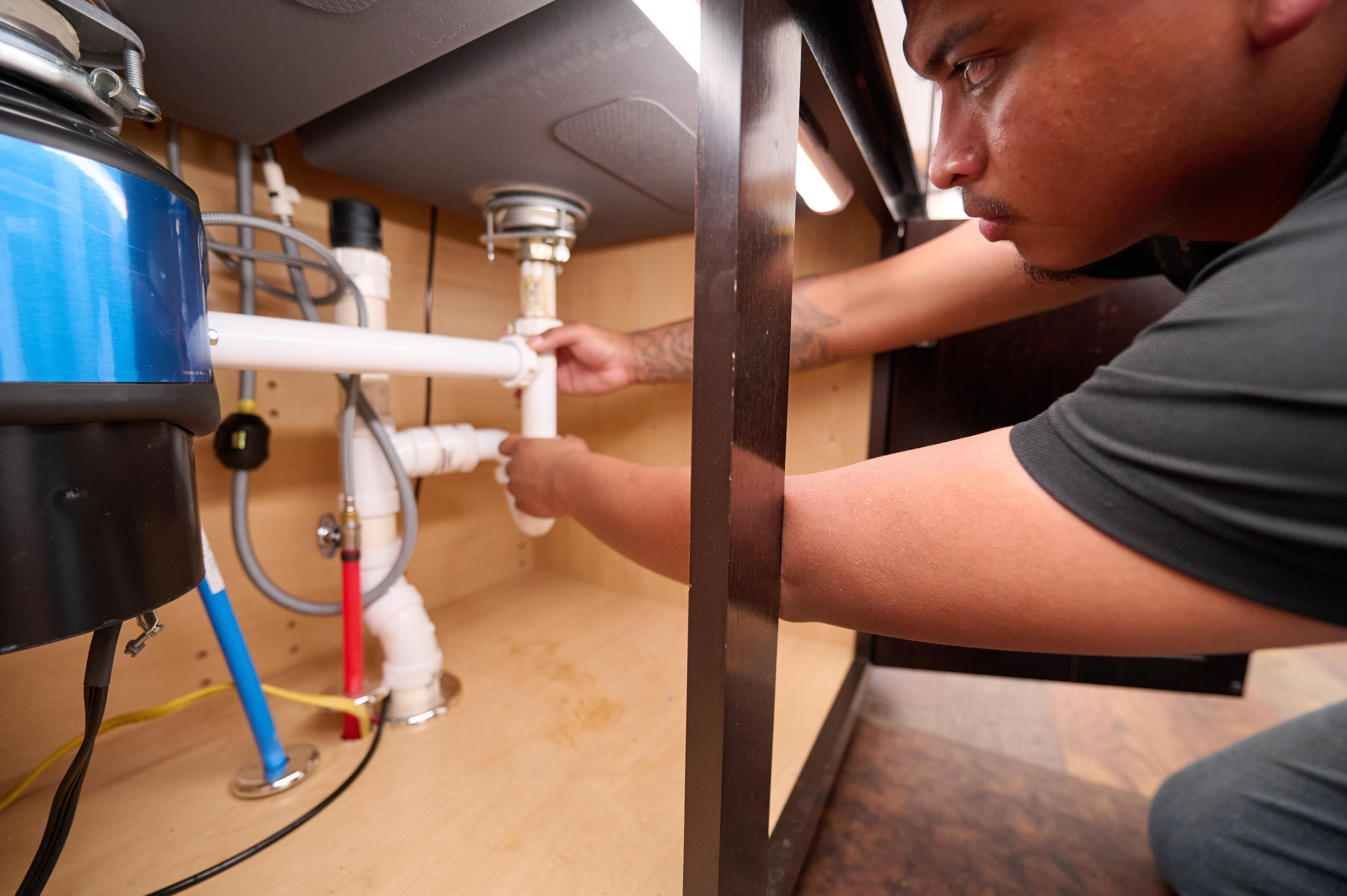
Wondering about the cost to hire a handyman? Discover prices, key cost factors, and money-saving tips to help you plan your next home project.
Caulk dries in mere minutes, but it isn’t waterproof without a lengthy curing time


Drying and curing are two distinct processes for caulk.
Curing takes at least 24 hours and creates a waterproof seal.
Dry time factors are humidity, temperature, freshness, and formula.
Silicone and acrylic latex caulks dry rapidly and cure more quickly.
Don’t use a hairdryer or apply direct heat to caulk as it cures.
Caulk is a quick-drying, versatile construction and repair material that seals joints, prevents leaks, and protects homes from moisture. However, drying alone doesn’t give caulk these benefits. It needs time to cure and become fully waterproof. So, how long does it take for caulk to dry? This guide outlines the differences between these processes and the info you need to apply caulk like a pro.

When people ask how long it takes for caulk to dry, they may actually want to know how long it takes to cure. People often use these terms interchangeably, but they have distinct meanings.
Caulk is generally dry to the touch in anywhere from 30 minutes to a couple of hours. Drying is the primary process by which water and moisture evaporate from the caulk. Though drying happens rapidly, caulk isn’t sealed from moisture until it cures.
Expect caulk to take at least 24 hours to cure, though some formulas will require up to 12 days under certain conditions. Curing is the slower, more complex process that begins once you expose the caulk to oxygen. Caulk must cure entirely before exposure to moisture, or it can wash away and won't be effective as a waterproof filler or sealant.
The time it takes for your caulk to dry and cure will depend on several factors, including the type of application, the caulk formula, and the temperature and humidity in your workspace. Be sure to read your product label carefully and account for the following:
Humidity: Silicone caulk reacts with moisture in the air to cure, so it works best in a humid environment. In contrast, acrylic latex caulk requires dry air to cure.
Temperature: Caulk cures best at 40 to 80 degrees Fahrenheit. However, you should never apply direct heat to increase the temperature.
Freshness: Most caulks have an expiration date. Even if it’s in a sealed tube, out-of-date caulk will never cure properly.
Formula: Drying and curing rates vary based on the type of caulk material you use, and any additives in its formula may increase your wait time.

There are three main types of caulk commonly used to caulk showers and other moisture-prone spaces, each with unique dry and cure times. Knowing the differences in curing times can help you better prepare for your caulking project. The table below breaks down each caulk type's drying and curing times.
| Caulk Type | Drying Time | Curing Time |
|---|---|---|
| Silicone Caulk | 30–180 minutes | 1–10 days |
| Acrylic Latex Caulk | 30–180 minutes | 1–10 days |
| Polyurethane-Based Caulk | 24 hours | 10–12 days |
Silicone caulks dry in as little as 30 minutes and take at least 24 hours to cure. They bond easily to smooth, nonporous surfaces like glass, metal, and ceramics. Some help keep bathrooms and kitchens sanitary with antimicrobial additives.
Like silicone, acrylic latex-based caulks dry rapidly and cure in one to 10 days. They can shrink or crack over time, leaving surfaces open to moisture. For this reason, they’re best for filling small gaps and joints in wood, especially areas that you’re painting over. Some feature silicone additives to improve durability and water resistance.
Polyurethane caulk takes longer to dry and cure than other types of sealant. Expect at least 24 hours of dry time and 10 to 12 days of curing time. Polyurethane is elastic, paintable, repels dirt, and is watertight. This makes it a popular caulk for sealing windows and outdoor use.
There is no way to speed the drying time of your caulk. Drying and curing times depend on the type and formula of the caulk you use. However, there are ways to set up your space to allow your caulk to cure efficiently. Always read your product label carefully before following any of the general tips below.
Don’t use a hair dryer: Direct heat can soften or melt silicone, preventing it from curing. All types of caulk cure best at warm temperatures of 40 to 80 degrees Fahrenheit.
Avoid water: Direct exposure to water will disrupt the caulk formula and prevent a tight seal from forming, forcing you to remove the caulk and start the process over.
Avoid freezing temperatures: Caulk can freeze in extreme cold, and cold air lacks the moisture that most caulks need to cure.
Use a humidifier: Because silicone cures by reacting with moisture in the air, a humidifier can create the ideal conditions for curing. This method won’t work for acrylic latex.
Turn off your heater: Dry air from your heater reduces humidity, so seal off the room you’re caulking in from exposure to vented heat.
Use a fan (acrylic latex only): Unlike other caulks, acrylic latex dries as water evaporates from it, so running a fan in the room can help speed up the curing process.
From average costs to expert advice, get all the answers you need to get your job done.

Wondering about the cost to hire a handyman? Discover prices, key cost factors, and money-saving tips to help you plan your next home project.

Discover wheelchair ramp cost estimates, including installation, materials, and tips to save. Learn what impacts your price and how to budget for your project.

Find out how much it costs to build a chicken coop—whether you've got a few hens in your backyard or a big, self-sustaining flock—with our expert guide.

Whether you need to hang a picture or mount a TV, this step-by-step guide on how to drill into brick will make the entire process a breeze.

Have a home repair problem? A highly rated handyman service shares 4 easy DIY tricks you can try yourself before spending money on a handyman service.

Does your home make scary noises that should be left to the ghouls and ghosts? Find out what some everyday home noises are and how to remedy them.